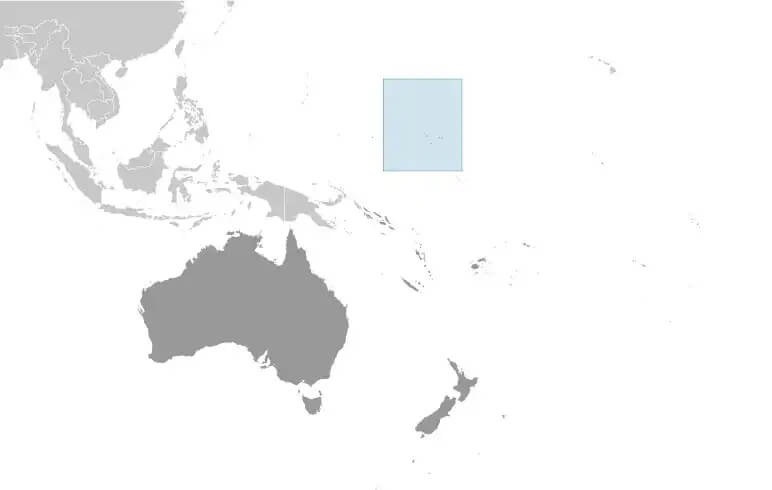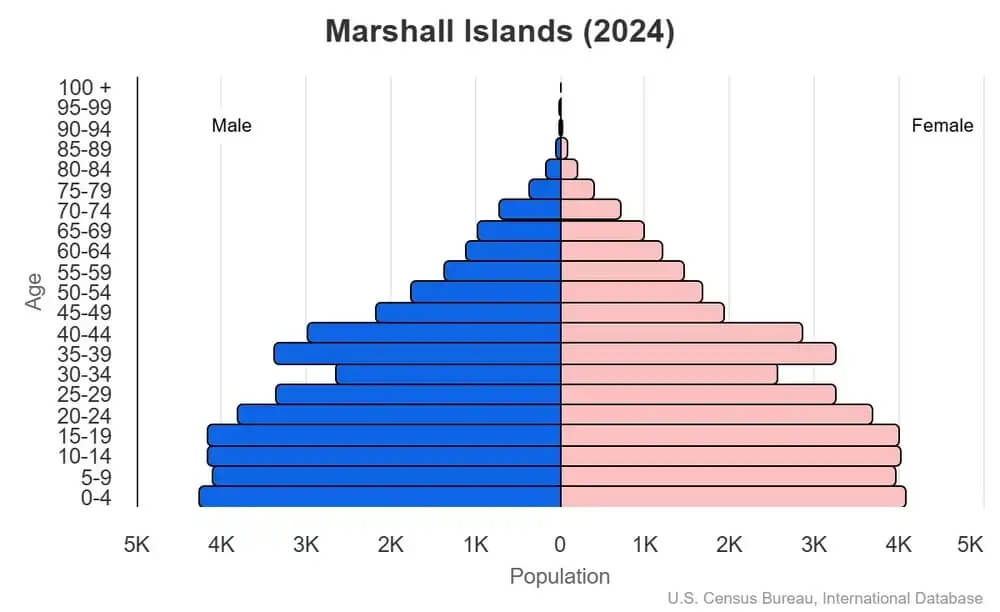World Book
Marshall Islands
Introduction
Background
After almost four decades under US administration as the easternmost part of the UN Trust Territory of the Pacific Islands, the Marshall Islands attained independence in 1986 under a Compact of Free Association. Kwajalein hosts one of four dedicated ground antennas that assist in the operation of the Global Positioning System (GPS) navigation system.
Geography
Area
total : 181 sq km
land: 181 sq km
water: 0 sq km
Climate
tropical; hot and humid; wet season May to November; islands border typhoon belt
Natural resources
coconut products, marine products, deep seabed minerals
People and Society
Population
total: 82,011 (2024 est.)
Ethnic groups
Marshallese 95.6%, Filipino 1.1%, other 3.3% (2021 est.)
Languages
Marshallese (official) 98.2%, other languages 1.8% (1999)
Religions
Protestant 79.3% (United Church of Christ 47.9%, Assembly of God 14.1%, Full Gospel 5%, Bukot Nan Jesus 3%, Salvation Army 2.3%, Reformed Congressional Church 2.2%, Seventh Day Adventist 1.7%, New Beginning Church 1.4%, other Protestant 1.6%), Roman Catholic 9.3%, Church of Jesus Christ 5.7%, Jehovah's Witness 1.3%, other 3.3%, none 1.1% (2021 est.)
Population growth rate
1.26% (2024 est.)
Government
Government type
mixed presidential-parliamentary system in free association with the US
Capital
name: Majuro
Executive branch
chief of state: President Hilda C. HEINE (since 3 January 2023)
head of government: President Hilda C. HEINE (since 3 January 2023)
Diplomatic representation in the US
chief of mission: Ambassador Charles Rudolph PAUL (since 27 February 2024)
Diplomatic representation from the US
chief of mission: Ambassador Laura M. STONE (since 12 July 2024)
Economy
Economic overview
upper middle-income Pacific island economy; US aid reliance; large public sector; coconut oil production as diesel fuel substitute; growing offshore banking locale; fishing rights seller; import-dependent
Real GDP (purchasing power parity)
$270.809 million (2024 est.)
$263.507 million (2023 est.)
$274.3 million (2022 est.)
Real GDP per capita
$7,200 (2024 est.)
$6,800 (2023 est.)
$6,800 (2022 est.)
Exports
$130.016 million (2021 est.)
$88.042 million (2020 est.)
$91.394 million (2019 est.)
Exports - partners
UK 16%, Germany 13%, Denmark 10%, Ghana 9%, Cyprus 9% (2023)
Exports - commodities
ships, refined petroleum, fish, natural gas, stone processing machines (2023)
Imports
$206.025 million (2021 est.)
$132.845 million (2020 est.)
$129.682 million (2019 est.)
Imports - partners
China 47%, Japan 15%, Germany 5%, Brazil 4%, Cyprus 4% (2023)
Imports - commodities
ships, refined petroleum, additive manufacturing machines, iron structures, crude petroleum (2023)
Human Development Index
The country's Human Development Index (HDI) is 0.733, ranking it 108th out of 193 countries tested. (more information)



